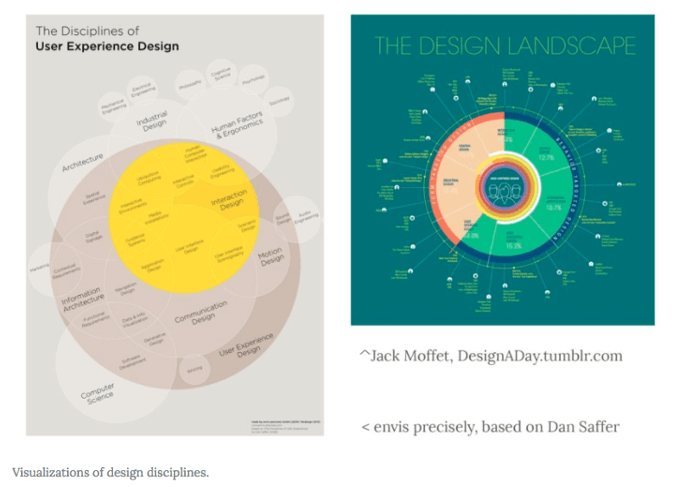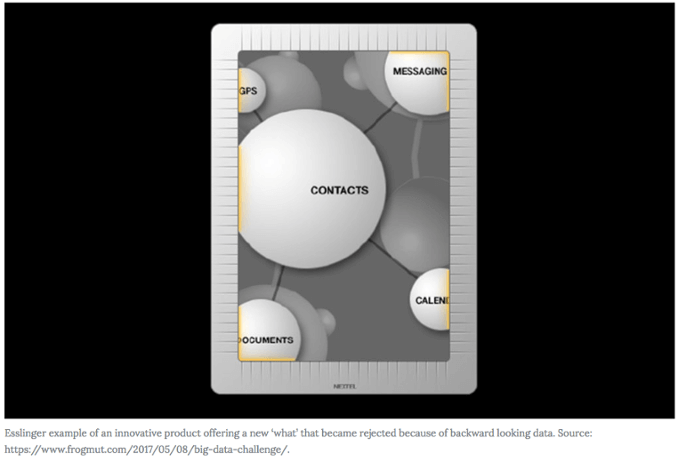What is data-driven service design?
Post • 8 min read
For a few years now, I’ve been engaged in a personal passion project of explicating what the increasing abundance of data can do for design. My most recent definition of data-driven design is that it means digitalisation and automation of design research. In future, data-driven design will possibly reach out to decision making and generative design. But we’re not there yet.
As I’ve written over the years about the concept and tools of data-driven design, my musing around the topic has been somewhat limited. As I’m operating in a digital design and development company context, design has referred to interaction design: user interface design decisions and how to best implement certain features.
I have left several design domains with little attention. In this article, I will venture a bit beyond my home turf. I’ll change the question and think about what should we build, instead of how we create it. This question takes a step to a higher abstraction level, that commonly associated with service design. In the following, I’ll consider what the big data world could offer for service design.
 How about the use of data in this domain? The public examples of data-driven service design are rare. For instance, the global Service Design Network chapter Netherlands was apparently among the first to host a session specifically aimed at sharing experiences with data in service design.
The short story written about the data-driven service design event gives an opinion I can readily agree with: quantitative data must complement, challenge and give a foundation for qualitative data.
How about the use of data in this domain? The public examples of data-driven service design are rare. For instance, the global Service Design Network chapter Netherlands was apparently among the first to host a session specifically aimed at sharing experiences with data in service design.
The short story written about the data-driven service design event gives an opinion I can readily agree with: quantitative data must complement, challenge and give a foundation for qualitative data.

Why → What → How (business design → service design → interface design)
What good can more data do for service design?
Service design is a bit of niche area of its own originating from 1980’s. Starting from the design of banking services, it has since slowly grown to be recognised profession serving the development of many physical touch points. But nowadays professionals calling themselves service designers also regularly deal with digital touch points. In the few visual depictions of what is the overall field of design visualised below, service design is totally missing from the left one (based Dan Saffer) illustrating UX design and occupies a small segment of human-centred design. But I assure you, it still exists, even thou it is clearly far out of the spotlight of more recent disciplines of digital design. How about the use of data in this domain? The public examples of data-driven service design are rare. For instance, the global Service Design Network chapter Netherlands was apparently among the first to host a session specifically aimed at sharing experiences with data in service design.
The short story written about the data-driven service design event gives an opinion I can readily agree with: quantitative data must complement, challenge and give a foundation for qualitative data.
How about the use of data in this domain? The public examples of data-driven service design are rare. For instance, the global Service Design Network chapter Netherlands was apparently among the first to host a session specifically aimed at sharing experiences with data in service design.
The short story written about the data-driven service design event gives an opinion I can readily agree with: quantitative data must complement, challenge and give a foundation for qualitative data.
Service design requires a mix of research inputs
The long-term experience design specialist Kerry Bodine puts it as “service design requires a mix of research inputs.” She has expressed a great concern of over-reliance on big data methods without the complementary qualitative insights. This relationship has been previously highlighted by Pamela Pavliscak under the terms big and thick data, in order to highlight their contemporary nature. In other words, data-driven design means using more data, particularly quantitative, in the design process. A side note: a term that may seem relevant to data-driven service design is service analytics. Service analytics, in my opinion, are a subset of traditional analytics areas: web analytics, market intelligence, and business intelligence. For instance, in Sumeet Wadhwa’s article on the topic, service analytics are presented foremost as a tool quantify, track and manage service design efforts, not so much inspire or help to find new design opportunities. Thus they are not a creative driver for the design process.“Data” for transformational design is embodied in designers, not the customer
Data can’t solve or even easily be used to support all design decisions. Given that people are naturally resistant to change, defending any major change using backward-looking data is not going be easy. In a recent post, frog founder Hartmut Esslinger provided strong criticism for misinterpretations of “big” data. His examples very neatly illustrate conservative interpretation bias of data. For instance, in a 2001 Motorola case, the company discarded a touchscreen smartphone concept (later known as the iPhone) because market intelligence data clearly showed people wanted to buy phones akin to those designed by Nokia! Clearly, the data-based insight was inferior to a “designer-based” insight about what you should create. Solving this challenge is not easy. I’ve personally helped to articulate one user acceptance testing approach called resonance testing originating from American design company Continuum. This method presents a quite specific procedure to investigate quantitatively consumers reactions to ‘what’ questions. However, this method is dependent upon face-to-face interactions and does not thus really fall within the domain of data-driven design as defined at the start.
Tools for data-driven service design
The data-driven or data-informed design does not identify any particular design approach. However, I see that it requires a certain prototypical process to support it. First and foremost, it always requires real data. Representative data must be collected, analysed, inferences made and brought to bear upon design decisions and new designs.Data-driven design always requires real data
What kind of data and which tools of analysis will help service designers to decide what needs to be created? In my previous writing, I’ve proposed a taxonomy of the different types of tools available for data-driven design. Starting from there, we can observe that we have three categories of tools that hold a promise in this direction. They are active data collection solutions, user recordings, and heat maps. Once more the origin of these tools is within the digital domain, in the web and mobile apps, but it is more important to bear in mind that they are very heavily related to the foremost revision or assessment of existing features. They can give a glimpse of what else your customers might love, what they fail to achieve or which part of service they neglect. Passive records from use sessions on digital or physical touch points can be revealing, but active data collection – from co-design to all manners of classical qualitative research has been the core of service design research. But are there any qualitative research methods that can scale, to provide the automation aspect I attach to data-driven design approach? Different types of surveys naturally scale well. Especially digital environments offer unprecedented opportunities to target and trigger surveys, making them much more powerful than they were in the past. Of course, they are limited by the structure of their insight. But free, open-ended can be very intuitive and applicable in data-driven design if we can also provide the tools that automate the analysis of the inputs, not just collection. Sentiment analysis alone, as criticised by Boden above, is a weak method. Segmentation and automated summaries can add value to aggregate figures alone. This is bit futuristic but already feasible (see also Zendesk’s approach to data in automating customer service).Insights from the local industry insiders
I had a chance to talk with Petteri Hertto, a long-term specialist in quantitative research, about the topic. He is a service designer currently working at Palmu agency in Helsinki, Finland. He says that too many projects feel obliged to gather quantitative data without good reasons. They end up with data that is non-actionable from a design point of view. Petteri has personally transformed from a quantitative data specialist to a designer that sees value in both types of data. “The best uses of quantitative data lie in proofing new ideas and verifying a business case around it,” he believes. Petteri has documented a model of value measurement his agency prefers in a Touchpoint article (Touchpoint magazine is the journal published by Service Design Network). Are there any new tools specifically for data-driven service design? I further pressed Petteri on whether any (quantitative) design research tools have appeared in the past 10 years that would resemble my definition of data-driven design. He recounted that there are few radically new developments. In the design approach favoured by their agency, they use the same tools as UX designers, including those data-intensive ones. However, he named one novel survey tool made possible by mobile technologies. It addresses several deficiencies of validity in traditional research. Crowst is a Finnish startup which provides surveys targeted on verified user behaviour in the physical world, improving the quality of input. Then again, this is an incremental improvement over existing tools, not a radically novel approach with unforeseen data masses, new level of insight or scalability.Can data reveal what the customer needs?
Are we back to square one in terms of answering the question of what does the customer want? Yes and no. I believe a thoughtful analysis of big data can serve three purposes in service design:- Identify opportunities for new experiences & features
- Inspire solution creation
- Validate solutions*
Recap
Data-driven design in user interface level is in good speed, but the need for qualitative insight still dominates service design. Contemporary service designs acknowledge the potential – and danger – in big data, but the tools to transform the potential into a revolution in the ways of working is still missing. It is evident service designers must be comfortable with working with data as big as it comes. However, ready-made tools and methods are far fewer than in user interface design. Answering the fundamental question “what to design" is notoriously difficult with data that describes things of the past. I believe it is and will be possible even to a greater extent than we can today imagine in a couple of years. Join the revolution today!Get in Touch.
Let’s discuss how we can help with your cloud journey. Our experts are standing by to talk about your migration, modernisation, development and skills challenges.

Ilja’s passion and tech knowledge help customers transform how they manage infrastructure and develop apps in cloud.
Ilja Summala
LinkedIn
Group CTO